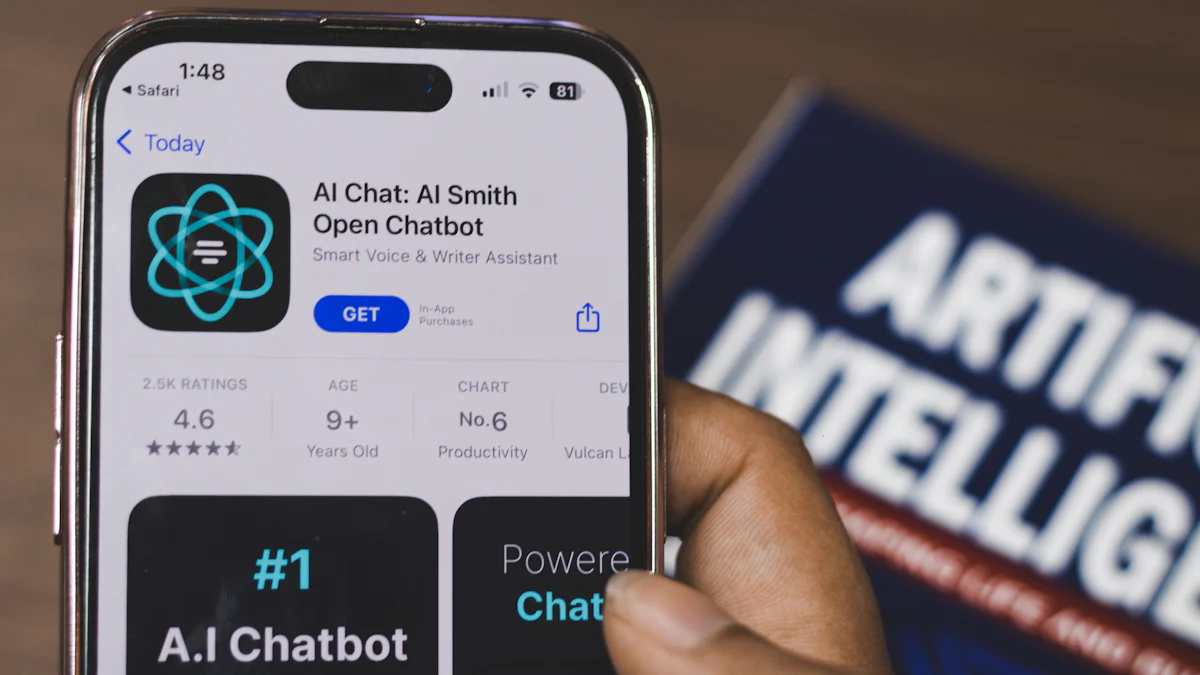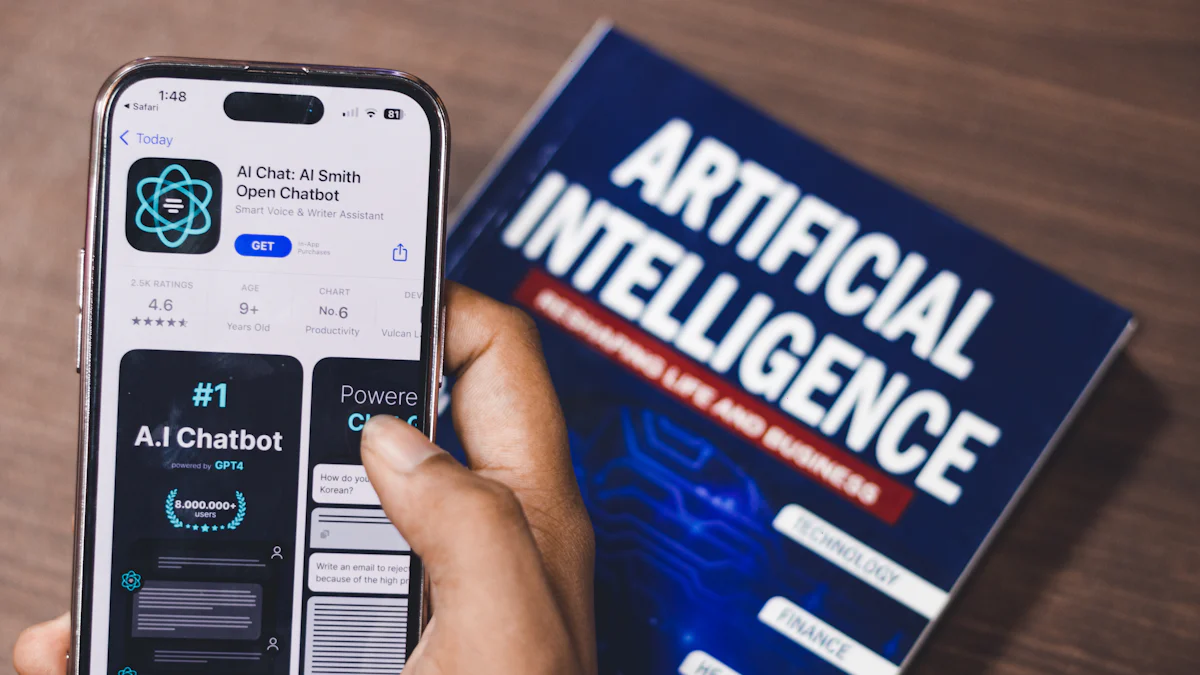
Running a small business often feels like juggling too many tasks with too few hands. Content Marketing AI can change that for you. It helps you save time, streamline processes, and scale your efforts without needing a big team. You can tackle challenges like limited resources or skill gaps by letting AI handle repetitive tasks. This gives you more room to focus on growing your business and connecting with your audience in meaningful ways.
Key Takeaways
Set clear objectives for using Content Marketing AI, ensuring your goals are specific, measurable, achievable, relevant, and time-bound (SMART).
Choose AI tools that align with your business needs by evaluating features and testing them through free trials to simplify your workflow.
Understand your audience better using AI analytics to identify behavior patterns and personalize content for enhanced engagement. Focus on creating high-quality content by utilizing AI tools for grammar checks and SEO optimization to improve readability and discoverability.
Leverage AI for ideation and visual content creation, allowing you to produce engaging graphics and fresh topic ideas effortlessly.
Be transparent about AI usage in your content creation process and ensure originality by infusing your voice and insights into the final output.
Start with budget-friendly AI tools, scaling your use gradually and exploring free resources to maximize the benefits without overwhelming your finances.
Set Clear Objectives for Content Marketing AI

When you start using Content Marketing AI, having clear objectives is essential. Set Clear Objectives ensures that your efforts align with your business needs and deliver measurable results.
Define Specific Goals and Metrics
You need to know what you want to achieve with Content Marketing AI. Are you looking to increase website traffic, generate more leads, or improve audience engagement? Defining these goals helps you stay focused. Break them down into measurable metrics. For example, if your goal is to boost website traffic, track metrics like page views, unique visitors, or bounce rates. These numbers give you a clear picture of your progress.
To make your goals actionable, use the SMART framework. SMART stands for Specific, Measurable, Achievable, Relevant, and Time-bound. Instead of saying, "I want more traffic," say, "I want to increase website traffic by 20% in three months." This approach keeps you on track and helps you evaluate success.
Ensure AI Tools Align With Business Requirements
Not all AI tools are created equal. You need to choose tools that match your business needs. Start by identifying the tasks you want AI to handle. Do you need help with content creation, SEO optimization, or audience analysis? Once you know your priorities, look for tools that specialize in those areas.
Evaluate each tool’s features carefully. Check if it integrates with your existing platforms, like your website or social media accounts. How to Maximize Your Content Marketing Tools for Success that save you time.
Remember, the right AI tool should simplify your workflow, not complicate it. It should help you achieve your goals efficiently while staying within your budget.
Choose the Right Content Marketing AI Tools

With so many options available, you need to focus on finding tools that meet your specific needs. Let’s evaluate and compare tools effectively.
Evaluate Tools for Key Functions (e.g., Content Creation, SEO, Analytics)
Start by identifying the core functions you need help with.
Look for tools that specialize in these areas. For content creation, some AI tools can generate blog outlines, write drafts, or even suggest headlines. If SEO is your focus, find tools that analyze keywords, optimize meta descriptions, and track rankings. For analytics, choose platforms that provide insights into audience behavior, traffic sources, and conversion rates.
Check user reviews and ratings to see how well these tools perform. Pay attention to feedback about ease of use, reliability, and customer support. A tool might have great features, but if it’s hard to use, it won’t save you time. Always prioritize tools that simplify your workflow and deliver consistent results.
Compare Features and Leverage Free Trials
Once you’ve shortlisted a few tools, compare their features side by side. Create a checklist of must-have functionalities and see which tools meet your criteria. For example, if you need a tool for content creation, check if it supports multiple formats like blogs, social media posts, or email campaigns. If analytics is your priority, look for dashboards that display data clearly and allow easy customization.
Take advantage of free trials whenever possible. Most tools offer trial periods that let you test their capabilities without committing to a subscription. Use this time to explore the interface, experiment with features, and assess how well the tool integrates with your existing platforms. Pay attention to how intuitive the tool feels. If it takes too long to figure out, it might not be the best fit.
During the trial, evaluate the tool’s performance. Does it deliver accurate results? Does it save you time? Does it align with your business goals? Answering these questions will help you make an informed decision. Remember, the right tool should feel like an extension of your team, making your content marketing efforts more efficient and effective.
Gain Audience Insights With Content Marketing AI

Understanding your audience is the foundation of effective content marketing. Content Marketing AI equips you with tools to analyze data and create personalized experiences that resonate with your target audience. Let’s explore how you can use AI to gain valuable insights and improve engagement.
Understand Audience Behavior Using Data Analytics
You can’t connect with your audience if you don’t know what they want. AI-powered analytics tools help you uncover patterns in audience behavior.
For example, AI can track which blog posts get the most views or which social media posts drive the most clicks. It can also identify when your audience is most active online. Use this information to adjust your content strategy. Publish posts when your audience is most likely to engage. Focus on topics that already capture their interest.
AI tools also help you segment your audience. They group users based on factors like age, location, or browsing habits. This segmentation allows you to tailor your content to specific groups. When you understand your audience better, you can create content that feels relevant and valuable to them.
Personalize Content for Enhanced Engagement
Generic content doesn’t grab attention. Personalization makes your audience feel seen and understood.
AI tools analyze user data to recommend personalized content. For instance, if a customer frequently reads articles about small business tips, the AI might suggest similar topics for future posts. You can also use AI to customize email campaigns. Address recipients by name and include content based on their past interactions with your brand.
Personalization extends to visuals too. AI can help you create images or videos that align with your audience’s preferences. For example, if your audience responds well to infographics, use AI tools to design visually appealing graphics that convey your message effectively.
When your content feels personal, your audience is more likely to engage. They’ll spend more time on your website, share your posts, and even become loyal customers. AI makes it easier to deliver this level of customization without overwhelming your team.
Focus on Content Quality and Optimization Using AI
Creating high-quality content is essential for building trust and keeping your audience engaged. Content Marketing AI can help you maintain professional standards while optimizing your content for better performance. Let’s explore how you can use AI to enhance both quality and optimization.
Maintain High Standards for Grammar and Structure
Your content reflects your brand, so it needs to be polished and professional. Poor grammar or messy structure can turn readers away. AI tools can help you avoid these pitfalls by acting as your virtual editor.
Use AI-powered grammar checkers to catch errors in spelling, punctuation, and sentence structure. These tools highlight mistakes and suggest corrections, ensuring your content reads smoothly. They also help you maintain a consistent tone, whether you want your writing to sound formal or conversational.
AI can also improve the flow of your content. It analyzes sentence length and paragraph structure, helping you break down complex ideas into digestible chunks. Shorter sentences and clear headings make your content easier to read. This keeps your audience engaged and encourages them to stay on your page longer.
When you use AI to refine your grammar and structure, your content becomes more professional and reader-friendly. This builds credibility and makes your audience more likely to trust your message.
Improve SEO and Readability Metrics
Even the best content won’t perform well if it’s hard to find or difficult to read. AI tools can optimize your content for search engines and improve its readability, making it more effective at reaching your target audience.
Start by using AI to analyze keywords. These tools identify the terms your audience searches for most often. Incorporate these keywords naturally into your content to improve your search engine rankings. Avoid overloading your text with keywords, as this can hurt your SEO performance.
AI can also help you optimize meta descriptions, headers, and image alt text. These elements play a crucial role in how search engines rank your content. Well-optimized metadata makes your content more discoverable, driving more traffic to your site.
Readability is just as important as SEO. AI tools evaluate factors like sentence length, word choice, and formatting. They provide suggestions to make your content easier to understand. For example, they might recommend replacing complex words with simpler alternatives or breaking up long paragraphs.
By focusing on both SEO and readability, you create content that performs well in search engines and resonates with your audience. This combination ensures your efforts deliver maximum impact.
Boost Creativity With AI in Content Marketing
Creativity drives successful content marketing. When you use AI, you unlock new ways to generate ideas and create visually appealing content. Let’s explore how you can boost your creative process with Content Marketing AI.
Use AI for Ideation and Topic Development
Coming up with fresh ideas can feel challenging, especially when you’re juggling multiple responsibilities. AI tools simplify this process by analyzing trends, audience preferences, and industry data. They suggest topics that resonate with your target audience, saving you time and effort.
Start by using AI to identify trending keywords or popular questions in your niche. These insights help you create content that addresses your audience’s needs. For example, if you run a small business blog, AI might suggest topics like “How to Improve Customer Retention” or “Top Marketing Strategies for Startups.” These ideas align with what your readers want to learn.
AI also helps you refine your topics. It provides outlines or structures for your content, ensuring your message stays clear and organized. You can even use AI to brainstorm headlines that grab attention. By leveraging these tools, you’ll never run out of engaging ideas for your content.
Enhance Visual Content Creation with AI Tools
Visuals play a crucial role in capturing attention. AI tools make it easier to create stunning graphics, videos, and other visual elements that elevate your content.
Use AI-powered design platforms to generate custom images or infographics. These tools offer templates and suggestions based on your brand’s style. For instance, if you’re creating a social media post, AI can recommend layouts, color schemes, and fonts that match your message. This ensures your visuals look cohesive and polished.
AI also simplifies video creation. Some tools allow you to turn text into animated videos or add captions automatically. You can create engaging video content without spending hours editing. Additionally, AI can enhance existing visuals by improving resolution or removing backgrounds, giving your content a professional touch.
When you combine AI with your creativity, you produce content that stands out. Visuals become more than just decorations—they become powerful tools for storytelling and engagement.
Address Legal and Ethical Issues in AI Usage
As you integrate AI into your content marketing strategy, addressing legal and ethical concerns becomes essential.
Commit to Transparency and Originality
Transparency should be at the core of your AI-driven content marketing efforts. Let your audience know when AI plays a role in creating content. For example, if an AI tool generates a blog post or designs visuals, acknowledge its contribution. This openness fosters trust and shows your commitment to ethical practices.
Originality matters just as much. Avoid relying solely on AI-generated content without adding your unique perspective. AI tools can assist with ideation and drafting, but you should always review and refine the output. Add your voice, insights, and expertise to make the content truly yours. This approach ensures your audience connects with your brand on a personal level.
Plagiarism is another concern to watch out for. Some AI tools might unintentionally replicate existing content. Use plagiarism detection tools to verify the originality of your work. By doing so, you protect your brand’s reputation and maintain credibility with your readers.
Manage Bias and Ethical Concerns in Automation
AI systems can sometimes reflect biases present in the data they analyze. These biases might lead to content that unintentionally excludes or misrepresents certain groups. To avoid this, you need to carefully evaluate the data your AI tools use. Choose platforms that prioritize fairness and inclusivity in their algorithms.
Regularly review the content your AI generates. Look for any signs of bias or inaccuracies. If you spot issues, address them immediately. This proactive approach helps you create content that resonates with a diverse audience and avoids potential backlash.
Respect your audience’s privacy by adhering to data protection laws like GDPR or CCPA.
By managing these ethical challenges, you can use Content Marketing AI responsibly. This not only enhances your brand’s reputation but also ensures your content aligns with your values.
Optimize Content Distribution Strategies With AI
content distribution plays a crucial role in ensuring your message reaches the right audience.
Automate Scheduling and Publishing
AI tools simplify this by automating your scheduling and publishing tasks.
Start by uploading your content to an AI-powered scheduling tool. These tools allow you to set specific dates and times for publishing. For example, if you want to post a blog on Monday morning and a social media update on Wednesday afternoon, the AI ensures everything goes live as planned. This automation saves you time and reduces the risk of missing deadlines.
AI tools also analyze the best times to publish based on audience activity. They identify when your followers are most active and schedule posts accordingly. This increases the chances of your content being seen and engaged with. By automating these tasks, you can focus on creating high-quality content while the AI handles the logistics.
Target Relevant Platforms Based on Audience Insights
Not all platforms are equal when it comes to reaching your audience. Content Marketing AI helps you identify where your audience spends their time and tailors your distribution strategy accordingly.
AI tools analyze data from your website, social media, and other channels to determine which platforms drive the most engagement. For instance, if your audience interacts more on Instagram than Twitter, the AI will recommend prioritizing Instagram for your campaigns. This ensures your efforts are focused on the platforms that matter most.
You can also use AI to customize content for each platform. A blog post might perform well on LinkedIn, while a short video might resonate more on TikTok. AI tools help you adapt your content format to suit the preferences of each platform’s audience. This targeted approach boosts your visibility and strengthens your connection with your audience.
By leveraging AI for content distribution, you ensure your message reaches the right people at the right time. This not only improves engagement but also maximizes the impact of your content marketing efforts.
Evaluate Performance Metrics Through AI Analytics

Tracking your performance is key to improving your content marketing strategy. Content Marketing AI provides powerful tools to help you measure success and refine your approach. By focusing on the right metrics, you can ensure your efforts deliver meaningful results.
Use AI to Track Key Performance Indicators (KPIs)
Key Performance Indicators (KPIs) show how well your content performs. AI tools make it easier to monitor these metrics in real time. They gather data from multiple sources and present it in a clear, actionable format.
Start by identifying the KPIs that matter most to your business.
AI also helps you spot trends and patterns in your KPIs. For instance, it might reveal that blog posts published on certain days perform better or that specific topics drive more engagement. Use these insights to adjust your strategy. When you understand what works, you can replicate success and avoid wasting resources on ineffective tactics.
Iterate Strategies Based on Data Insights
Data insights are only valuable if you act on them. AI tools not only provide analytics but also suggest ways to improve your strategy. They highlight areas where you can make changes to achieve better results.
For example, if your AI tool shows that certain keywords boost traffic, incorporate those keywords into future content. If it identifies low-performing posts, analyze why they didn’t resonate. Maybe the topic wasn’t relevant, or the timing was off. Use this feedback to refine your approach.
AI can also predict future trends based on historical data. It might suggest topics that will likely gain traction or recommend optimal posting times. By iterating your strategy based on these insights, you stay ahead of the curve and maintain a competitive edge.
Regularly reviewing and updating your strategy ensures continuous improvement. With Content Marketing AI, you can make data-driven decisions that maximize your impact and help you achieve your goals.
Combine AI with Human Oversight in Content Marketing
Review and Edit AI-Generated Content for Consistency
AI tools can create content quickly, but they don’t always get everything right.
Start by checking for factual accuracy. AI tools rely on data, but they can sometimes pull outdated or incorrect information. Verify any statistics, claims, or references included in the content. This step ensures your audience receives reliable and trustworthy information.
Next, focus on tone and style. AI-generated content might not always match the tone you want. Adjust the language to make it more conversational or professional, depending on your audience. Look for areas where the content feels repetitive or lacks flow. Restructure sentences or paragraphs to improve readability and engagement.
Consistency is key. Ensure the content aligns with your overall branding. Check for uniformity in formatting, terminology, and style. For example, if your brand uses a casual tone, make sure the content reflects that. This attention to detail helps build trust and strengthens your connection with readers.
Infuse Human Creativity and Emotional Intelligence
Infuse human creativity and emotional intelligence.
Start by adding storytelling elements. Share personal anecdotes, customer success stories, or real-world examples that illustrate your points. Stories create an emotional connection and make your content more memorable. AI can suggest topics, but only you can provide the human experiences that make those topics come alive.
Focus on empathy. Think about your audience’s challenges, goals, and emotions. Tailor your content to address their needs and show that you understand their perspective. For example, if your audience consists of small business owners, acknowledge their struggles and offer practical solutions. This approach builds trust and fosters loyalty.
Don’t shy away from creativity. Experiment with unique formats, such as interactive quizzes, polls, or behind-the-scenes videos. Use visuals, humor, or metaphors to make your content stand out. AI can assist with generating ideas, but your creativity transforms those ideas into something truly engaging.
By combining AI with your creativity and emotional intelligence, you create content that feels authentic and impactful. This blend of technology and human touch ensures your audience stays connected and invested in your brand.
Manage the Cost-Effectiveness of AI for Small Businesses

Start With Budget-Friendly AI Tools and Scale Gradually
You don’t need to break the bank to start using AI for content marketing. Many affordable tools offer powerful features tailored for small businesses. Begin by identifying your most pressing needs. Do you need help with content creation, SEO, or analytics? Focus on tools that address these specific areas without overwhelming your budget.
Look for AI platforms that offer free plans or low-cost subscriptions. These options often include essential features to get you started. For example, some tools provide basic content generation or keyword analysis at no cost. As your business grows, you can upgrade to premium plans with advanced functionalities.
Scaling gradually is key. Test one tool at a time to see how it fits into your workflow. Avoid investing in multiple tools simultaneously. This approach helps you manage costs while ensuring each tool delivers value. Once you see measurable results, consider expanding your toolkit to cover additional tasks.
“Start small, think big, and scale smartly.” This mindset ensures you maximize the benefits of AI without overspending.
Utilize Free or Affordable Resources From Trusted Platforms
Many trusted platforms offer free or affordable resources to help you make the most of AI.
Explore free trials offered by AI providers. These trials let you test features before committing to a subscription. Use this time to evaluate the tool’s performance and ensure it aligns with your goals. If the tool doesn’t meet your expectations, you can move on without financial loss.
Open-source AI tools are another great option.
Additionally, keep an eye out for discounts or special offers. Some providers offer reduced rates for small businesses or startups. Signing up for newsletters or following these companies on social media can help you stay informed about promotions.
By leveraging these free and affordable resources, you can stretch your budget further while still benefiting from the power of AI.
Leveraging Content Marketing AI transforms how you approach efficiency, creativity, and scalability. It empowers you to save time, produce high-quality content, and connect with your audience in meaningful ways. However, the real magic happens when you combine AI’s capabilities with your unique human touch. This blend ensures authenticity and fosters innovation.
CTA_Block_0
Start experimenting with AI tools today. Test their features, adapt them to your needs, and refine your strategies over time. By doing so, you’ll not only enhance your content marketing skills but also position your small business for long-term success.


